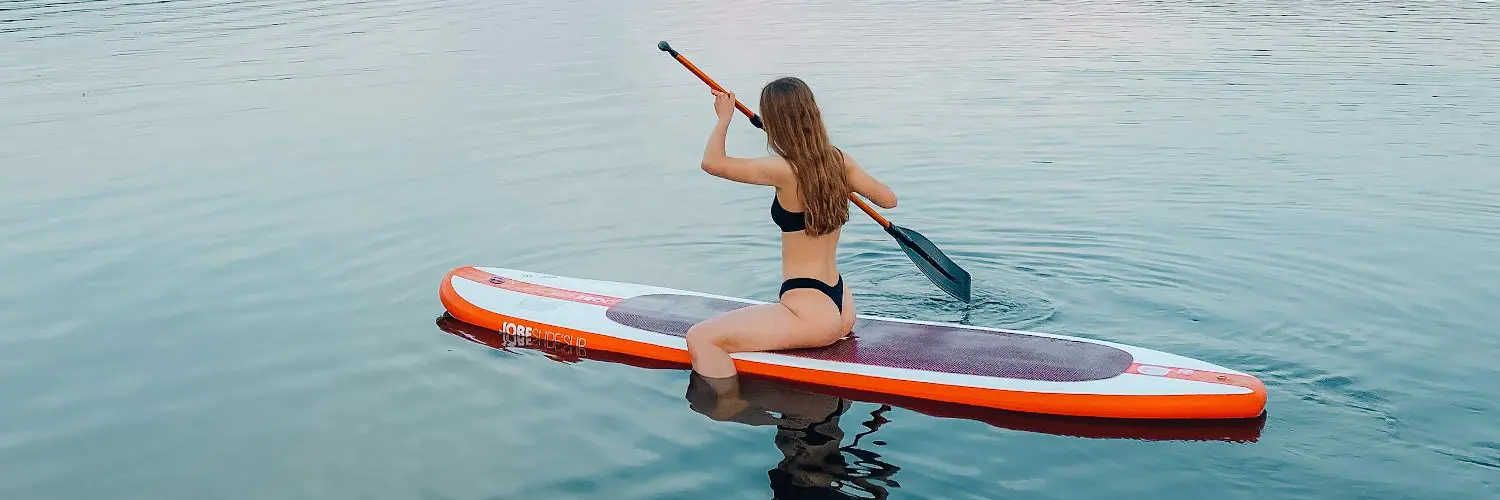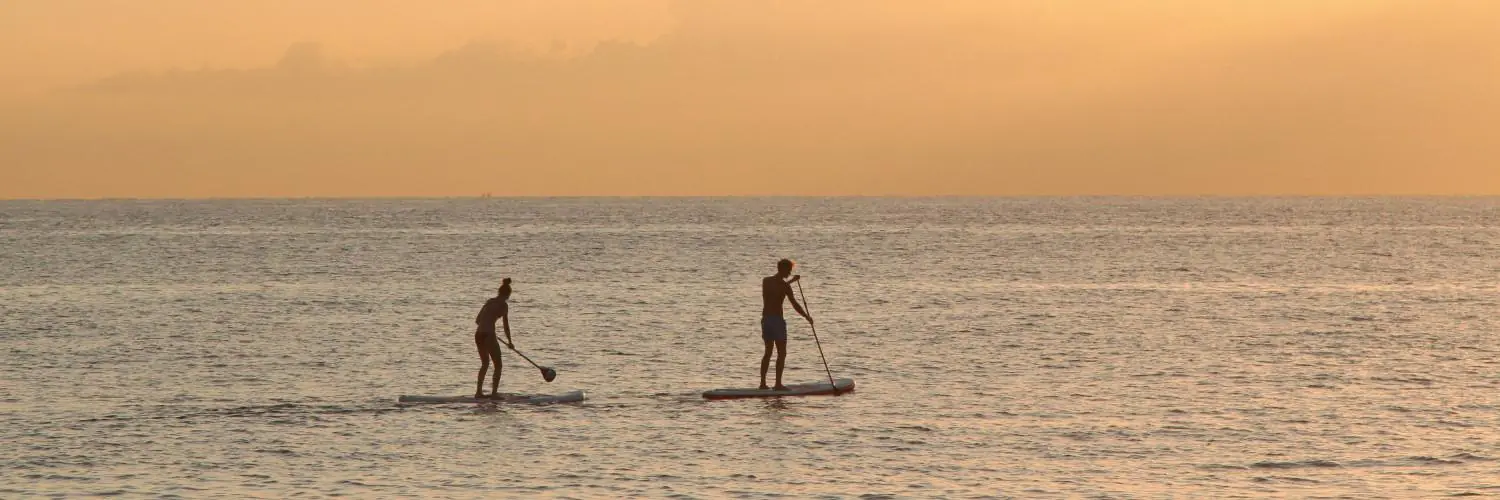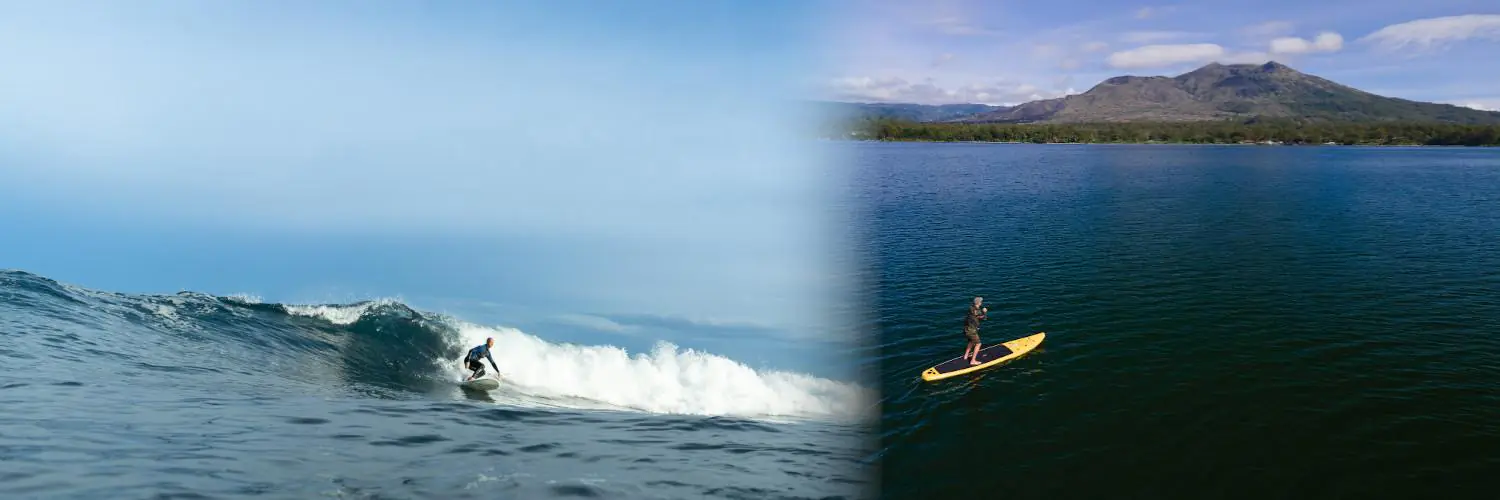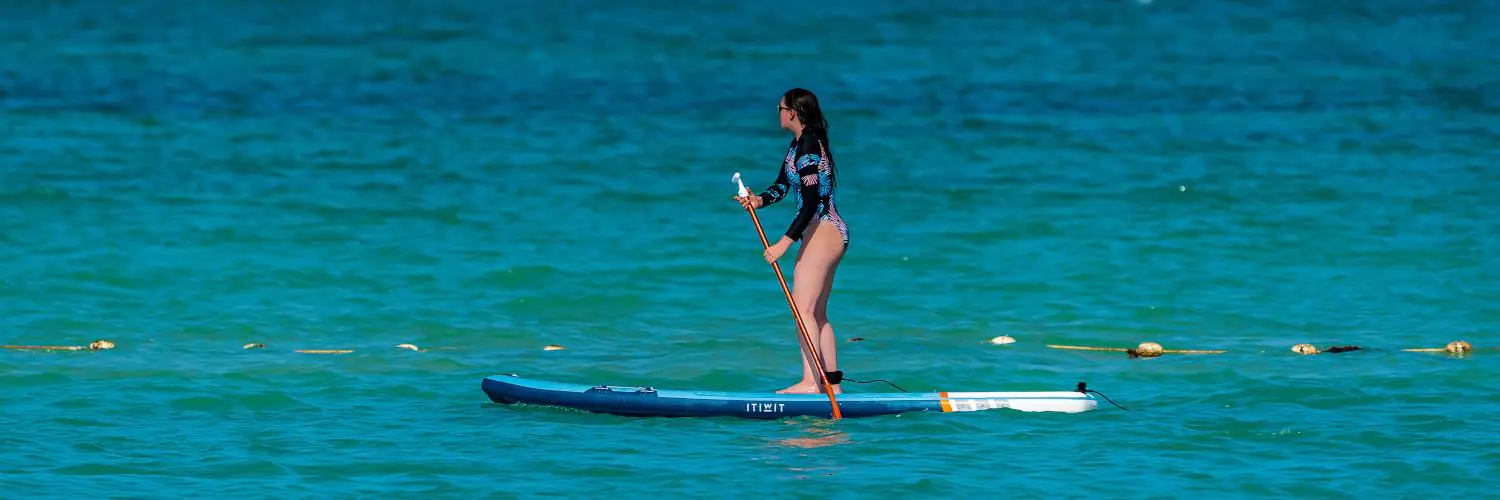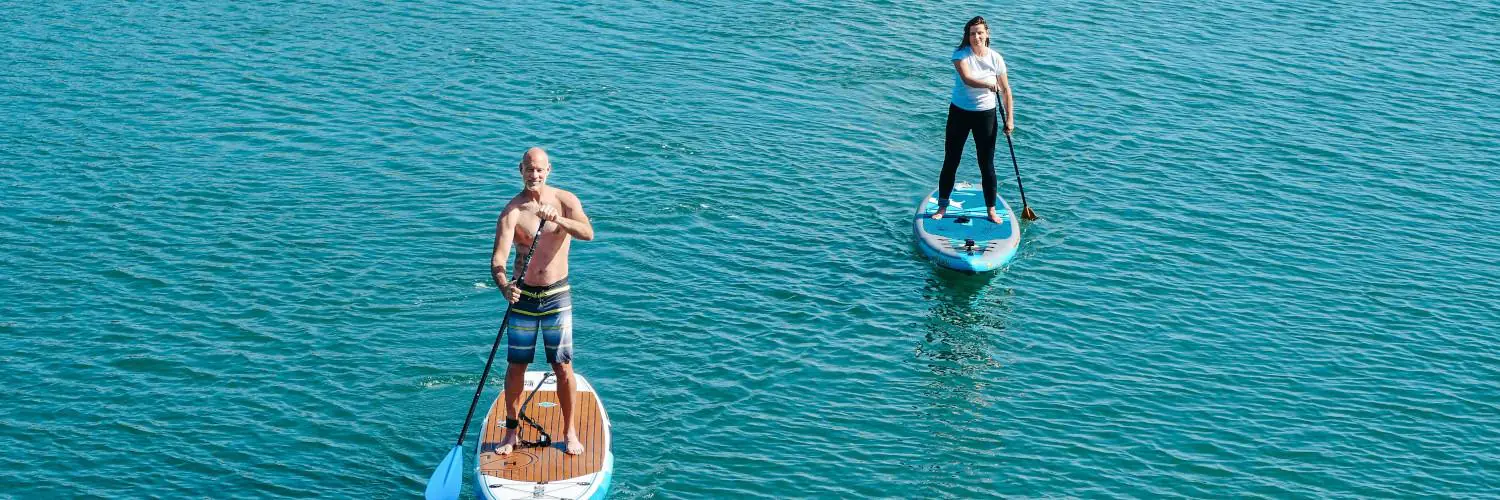Paddle boarding is generally a great core exercise that builds up the muscles that support your lower back and spine, but the sport can also cause back pain if not performed correctly. Avoiding back pain while SUPing is all about maintaining the right form and posture.
If you allow your lower back to torque when you pull your paddle through a stroke, your lower back will take the brunt of the exercise from a twisted angle, causing pain. Those recovering from recent back surgery or with degenerative slipped discs or fractures are likely to have weakened muscles or inflamed nerves surrounding the lower back. When engaging in a physical core workout that requires you to twist and torque your mid-body, these nerves might seize and flare up as they try to protect the weak spots in your back from further harm.
Paddle boarding can even cause lower back pain for people who don’t have any predisposed medical issues, yet are severely unfit and paddle with poor form. The easiest way to know if you’re doing more damage to your back than good is if you start feeling pain or fatigue in your lower back or SI joints.
Table of Contents
Lower spine and SI pain
Experiencing lower back pain is a sign that you might be using the wrong muscles and aren’t engaging your glutes, hamstrings, and core correctly, leaving your lower back to carry the weight of your body instead. Bending through your stroke before your lats and abs are connected at the catch, and bending at the lower back as opposed to flexing at your hips while paddling, are probably the most common problems in paddle boarding form. Poor form can cause lower back pain in anyone, but it can be even more serious for those prone to back and SI joint issues.
Piriformis issues
If you experience pain in your hips when paddling, you might be overworking your piriformis muscle, which is located within your glute, next to the sciatica nerve. The piriformis muscle connects your lower spine to your thigh bones and is one of the hip’s stabilizing muscles that can cause hip pain when engaged in core exercises. Such hip pain can often be fixed with the right stretches, and if necessary physiotherapy.
Upper back pain
Upper back pain is a cause for worry for many paddle boarders too. It often results from rhomboid muscles taking up slack from other weak muscle groups such as Trapezius, Serratus Anterior, or fighting against tight Pectorals. Here again, these pains often result from bad form when paddling. Many times paddelboarders initiate their paddling strokes from their arms and shoulders, putting extreme pressure on the above mentioned muscles. To avoid these issues, your strokes should start from your core, glutes, hips and abs, then engaging your lats with the shoulders and arms only propagating the movement through the paddle. While upper back issues can be crippling for a while and can take some time to fix, they can generally be solved with the right stretches.
Can Stand up Paddle boarding help with lower back problems?
People who suffer from ongoing back problems such as degenerative disc diseases, mild arthritis, or stenosis of the spinal cord can sometimes benefit from the muscle strengthening action of paddle boarding. SUPing strengthens the core muscles that support the spine. In some cases, increased back strength can help relieve nerve infringement areas and, as a result, relieve lower back pain. Some paddle boarders who have recovered from back surgery report that SUPing has improved their back fitness and reduced their pain levels significantly by strengthening these core muscles.
People who have sciatic pain can also gain from paddle boarding. It helps to get better. By paddling with good form, you may be able to improve your core strength without putting pressure on the sciatic nerves. Aside from the physical benefits of maintaining core fitness, let’s not ignore the huge mental impact that being out in the water can have.
Is Stand up Paddle boarding good for your back?
When you leave calm waters to get into the surf, the likelihood of injuring or causing further irritation to your back increases. These can result from sudden and/or exaggerated movements during takeoff or wipe-outs, or muscle overuse during long sessions in waves. Compared with surfing, however, stand up paddling is better for your lower back than laying down paddling on a surfboard, which constantly puts the spine in hyper-extension, including your neck.

